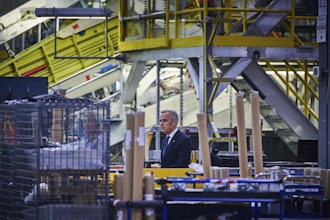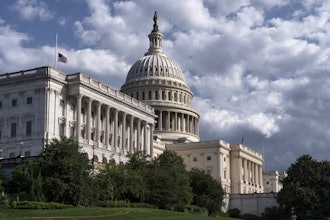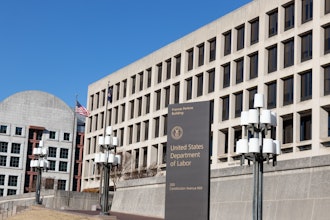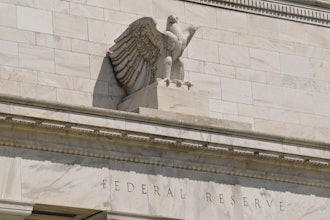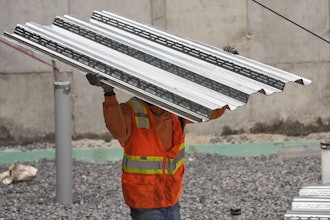New construction starts in December fell 10 percent to a seasonally adjusted annual rate of $708.9 billion, continuing to retreat after November’s 7 percent slide, according to Dodge Data & Analytics.
The December downturn reflected diminished activity for each of the three main construction sectors. Nonresidential building dropped 14 percent, as its commercial building segment lost momentum following its heightened November amount. Residential building pulled back 8 percent, due to reduced activity in December for both single family and multifamily housing. Nonbuilding construction decreased 9 percent, with a steep plunge by the electric utility/gas plant category that outweighed a December rebound for public works.
For 2018 as a whole, total construction starts increased a slight 0.3 percent to $789.0 billion. This came after 7 percent gains in both 2016 and 2017, as well as 11 percent to 14 percent gains from 2012 through 2015. The 2018 increase for total construction starts was restrained by a 31 percent plunge for the electric utility/gas plant category. If electric utilities and gas plants are excluded, total construction starts for 2018 would be up 2 percent from 2017.
The December statistics produced a reading of 150 for the Dodge Index (2000=100), down from 167 in November and 179 in October, while matching the 2018 low at 150 reported back in September. For the full year 2018, the Dodge Index averaged 167.
“The monthly pattern of construction starts was mixed during 2018, as elevated activity in June and October was offset by weaker activity in the months immediately following, with the end result being that the 2018 dollar amount of construction starts was slightly above the previous year,” says Robert A. Murray, chief economist for Dodge Data & Analytics. “By recent standards, the overall level of construction starts in 2018 can be regarded as healthy, but the substantially slower rate of growth compared to the prior six years is suggestive of a market that’s close to a peak.”
“There were several noteworthy features that stand out in the 2018 construction starts data,” Murray adds. “Last year’s brisk economic expansion enabled market fundamentals for multifamily housing and commercial building to strengthen, which supported more growth for apartment projects, office buildings, and hotels. However, store construction continued to decline, adversely affected by the glut of retail space produced in the previous decade as well as by the greater role now played by e-commerce. Single family housing showed improvement early in 2018, but then plateaued and began to recede given affordability constraints. The institutional building segment showed more growth for educational facilities and witnessed a number of major transportation terminals reach groundbreaking, although not to the same extent as what took place in 2017. Public works construction benefitted from the 2018 omnibus federal appropriations bill passed last March, as well as funding arising from recent state transportation bond measures. Going forward into 2019, economic growth is not expected to be as strong as what occurred during 2018, which may dampen groundbreaking for multifamily housing and commercial building projects. In addition, more growth for public works this year requires that federal appropriations for fiscal 2019 get finalized without much further delay.”
Nonresidential building in December was $242.8 billion (annual rate), down 14 percent from the previous month. The commercial building categories as a group fell 27 percent after registering a 15 percent increase in November that featured the start of the $1.5 billion Manchester Pacific Gateway mixed-use complex in San Diego CA with hotel, office, retail, museum, and garage space. Office construction in December dropped 34 percent, following its November amount that included the start of a $750 million Facebook data center in Covington GA, the $544 million office portion of the Manchester Pacific Gateway complex, and a $530 million California state government office building in Sacramento.
The largest office projects that were entered as December construction starts were $400 million for three Microsoft data center buildings in San Antonio, Texas, a $222 million data center in Ashburn, Virginia, and a $135 million California state government office building in Rancho Cordova.
Hotel construction experienced an even larger percentage decline in December, plunging 41 percent, after being lifted in November by the $643 million hotel portion of the Manchester Pacific Gateway complex and the $241 million Omni Hotel in Oklahoma City. The largest hotel projects that were entered as December construction starts were the $168 million Joseph Nashville Hotel in Nashville and the $83 million hotel portion of a $170 million hotel/multifamily mixed-use building in Austin, Texas.
Decreased activity in December was also reported for commercial garages, down 30 percent; and warehouses, down 24 percent; although the warehouse category did include the start of a $136 million warehouse complex in Lacey, Washington and a $130 million warehouse complex in Nampa, Idaho.
Store construction was the one commercial project type that registered a December gain, rising 32 percent with the help of the $52 million Edens Collection shopping mall in Chicago. The manufacturing plant category slipped 2 percent in December, with the largest project entered as a construction start being a $117 million bioenergy plant in Rialto, California.









